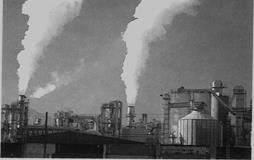Relative sanitation servicing National
1. The figure of a country’s Gross ____ Product will be larger than that for its Gross _____ Product.
2. In countries where food is scarce, ______ is inevitably a major problem.
3. Using overseas aid for debt ______ does not directly help any people who are suffering through poverty.
4. The amount of money earned by someone suffering from _____ poverty will be greater in a rich area than in a poor area, whereas ____ poverty does not take account of a person’s immediate environment.
5. The Child Poverty Action Group does all it can for the ____ of poverty among children in the United Kingdom.
6. Temporary refugee camps usually have rather poor _____ facilities.
|
1. The government is waging war on drunken driving.
2. Paparazzi are besieging the Princess’s home.
3. A major advertising campaign was planned to launch a new cosmetics range.
4. The Brazilian football team routed all the others in the World Cup.
5. The companies are battling to win market supremacy.
6. We have a major fight on our hands if we are to save the company from bankruptcy.
7. It’s time to rally the troops and get them to do some overtime.
8. A lot of artists who only became famous after their deaths spent their lifetimes in penury.
9. It’s a very poor country – over 60% of the population live on /below the breadline.
10. The charity’s main aim is to improve healthcare in impoverishedareas of the world.
11. Everywhere in the city you see destitute people living in shop doorways or under bridges.
12. Unfortunately, the number of deprivedchildren in the world is growing, even in so-called rich countries.
13. When we were first married, we were living from hand to mouth.
14. When we were children, money was always tight.
ACQUIRING COMMUNICATION SKILLS
|
Myth 1: Wars, disease, and natural disasters will control population surplus.
Myth 2: Technology and oceans will feed the world.
Myth 3: Man is only using a fraction of the land.
|
Myth 1:
Fact: In five years of terrible war, population of North and South Vietnam grew by more than 3 million.
Fact: A giant tidal wave killed more than 500,000 in East Pakistan in 1970, but this number was replaced in just 35 days.
Fact: Improved healthcare and modern medicines have lengthened western man’s life-span by two decades since 1900.
Myth 2:
Fact: Green revolution is shot in the arm,but population growth is neutralizing food production giants.
Fact: Oceans are 90% biological deserts, with other 10% in danger of being over-exploited.
Myth 3:
Fact: Much of the land is too hot, too cold, too wet or too dry for agriculture and human habitation.
|
1. Why do environmentalists say we should avoid spray cans?
2. Why do greens favour organic farming and using unleaded petrol?
3. Why do environmentalists encourage us to use recycled paper and bottle banks? How do Russians take part in the recycling process?
4. What are other methods of environmental protection that greens favour? Do you favour such methods? Why?
|




|
The Greenhouse Effect
According to the National Academy of Sciences, the Earth’s surface temperature has risen by about 1 degree Fahrenheit in the past century, with accelerated warming during the past two decades. There is new and stronger evidence that most of the warming over the last 50 years is attributable to human activities. Human activities have altered the chemical composition of the atmosphere through the buildup of greenhouse gases - primarily carbon dioxide, methane, and nitrous oxide. The heat-trapping property of these gases is undisputed although uncertainties exist about exactly how the earth’s climate responds to them.
Our Changing Atmosphere
Energy from the sun drives the earth’s weather and climate, and heats the earth’s surface; in turn, the earth radiates energy back into space. Atmospheric greenhouse gases (water vapor, carbon dioxide, and other gases) trap some of the outgoing energy, retaining heat somewhat like the glass panels of a greenhouse.
Without this natural “greenhouse effect”, temperatures would be much lower than they are now and life as known today would not be possible. Instead, thanks to greenhouse gases, the earth’s average temperature is a more hospitable 60°F (15° C). However, problems may arise when the atmospheric concentration of greenhouse gases increases.
Changing Climate
Global mean surface temperatures have increased by 0.5-1.0° F since the late 19th century. The 20th century’s 10 warmest years all occurred in the last 15 years of the century. Of these, 1998 was the warmest year on record. The snow cover in the Northern Hemisphere and floating ice in the Arctic Ocean have decreased. Globally, the sea level has risen by 4-8 inches (10-20 cm) over the past century. Worldwide precipitation over land has increased by about one per cent.
Increasing concentrations of greenhouse gases are likely to accelerate the rate of climate change. Scientists expect that the average global surface temperature could rise by 1-4.5 F (0.6-2.5° C) in the next fifty years, and by 2.2-10° F (1.4-5.8° C) in the next century, with significant regional variation. Evaporation will increase as the climate warms, which will increase average global precipitation. Soil moisture is likely to decline in many regions, and intense rainstorms are likely to become more frequent.
Calculations of climate change for specific areas are much less reliable than global ones, and it is unclear whether regional climate will become more variable.
Impacts
Rising global temperatures are expected to raise the sea level, and change precipitation and other local climate conditions. Changing regional climate could alter forests, crop yields, and water supplies. It could also affect human health, animals, and many types of ecosystems. Deserts may expand into existing rangelands, and features of some national parks may be permanently altered.
Unfortunately, many of the potentially most important impacts depend upon whether rainfall increases or decreases, which can not be reliably projected for specific areas.
|
When faced with this question, individuals should recognize that collectively they can make a difference. Think back to the days before recycling became popular - when everyone threw everything out in the trash. In less than 20 years, most households have gone from recycling little or nothing to recycling newspapers, plastics, glass, and metal. Many businesses recycle paper and buy recycled products and many industries practice source reduction in their packaging efforts. An entire mindset has changed in one generation!
Taking action on global warming (or climate change) is similar. In some cases, it only takes a little change in lifestyle and behavior to make some big changes in greenhouse gas reductions. For other types of actions, the changes are more significant. When that action is multiplied by 6 billion people worldwide, the savings are significant.
“Individuals Can Make a Difference” identifies actions that many households can take that reduce greenhouse gas emissions in addition to other benefits, including saving your money! The actions range from changes in the house, in the yard, in the car, and in the store. Everyone’s contribution counts, so why not do your share?
|
a) the convenience of cars
b) the excitement of cars
c) the development of cars
d) the danger of cars
Cars: Passion or Problem?
For some people, the car is a convenient form of transportation. But for others, the car is an exciting hobby. Some people spend their lives collecting valuable cars. Others drive them in races. For many people, cars are more than transportation: they are a source of passion and pleasure. Yet cars can also be a source of many problems.
In 1903, Henry Ford began selling the Model T car for $825. His company, Ford Motors, was the first to produce cars in large numbers. This made the car available to large numbers of people and helped them to travel long distances quickly and easily. The car has brought people much closer to places of work, study, and entertainment. Many people also work in car-related industries: fixing cars, washing cars, advertising cars, and selling car products such as stereos and cellular phones. Most Americans buy a new car every five or six years. This means that one American may own a dozen cars in a lifetime. In fact, there are more cars than people in the United States. In New York City, 2.5 million cars move in and out of the city each day. In this traffic, the average speed is sometimes 8.1 miles per hour. This speed could easily be reached by riding a horse instead of driving a car. But New Yorkers continue to drive, just as people do in California, where freeways are often verycrowded. Some environmentalists believe that forms of public transportation such as buses and trains have not been fully developed in the United States. They try to teach others that public transportation savesfuel and helps to protect the environment. Many people are unhappy with car traffic and pollution, as well as with the use of beautiful land for building new roads. One environmentalist, Jan Lundberg, left his Mercedes-Benz in Los Angeles and moved to the forests of northern California. There he works on The Auto-Free Times, a newspaper that teaches people how to live without driving. Lundberg travels on foot, by bicycle, or by bus. Before he decided to live without a car, Lundberg worked for the oil companies, studying the prices of gasoline.
Lundberg and other environmentalists dream of turning parking lots into parks and replacing cars with bicycles, but most people around the world believe that the car is a necessary part of life in today’s world. Still, there is an important question that must be answered: What kind of fuel will we use when gasoline is no longer available? Lundberg believes that by the year 2021, there will no longer be oil for gasoline makers to use. To solve this problem, car companies in Korea, Japan, Europe, and the United States are trying to develop an electric carthat will not require gasoline at all.
The electric car is not a new idea. It had success with American women in the early 1900s. Women liked electric cars because they were quiet and did not pollute the air. Electric cars were also easier to start than gasoline-powered ones. But gasoline-powered carswere faster, and in the 1920s they became much more popular. The electric car was not used again until the 1970s, when there were serious problems with the availability of oil. Car companies began to plan for a future without gasoline. The General Motors Company had plans to develop an electric car by 1980; however, oil became available again, and this car was never produced.
Today there is a new interest in the electric car, which is partly related to a passion for speed and new technology. In 1977, engineer Paul MacCready designed a human-poweredairplane that successfully completed a three-mile flight. A similar airplane crossed the English Channel in 1979, followed by a solar-powered airplane. In 1987, the Sunraycer, a solar-powered car, won a 2,000-mile race in Australia. As a result of this success, the General Motors Company began new work on the development of the electric car. The Toyota Company recently decided to spend $800 million a year on the development of a new car technology. Many engineers believe that the electric car will lead to other forms of technology being used for transportation. Cars may change, but their importance will not. Cars are important to nearly everyone, including engineers, businesspeople, environmentalists, and even poets. Poet Curt Brown believes that cars are part of our passion for new places and new experiences. According to Brown, this “very, very comfortable flying chair” will continue to bring us travel and adventure, no matter how it changes in the future.
|
____ a. Soon there will be no oil to fuel cars.
____ b. Cars, whether gasoline- or electrically-powered, will always be important.
____ c. Cars can cause problems.
____ d. To some people, cars means more than transportation.
____ e. Some environmentalists teach people how to live without cars.
____ f. People in the US need cars to go to school, to work, and to places of
entertainment.
|
1.Some people enjoy _______________
2.People can travel _________________
3.People are closer to _______________
4.Some people make money by _______
Disadvantages of the Car
1. Lots of traffic and _________________
2. Cars use more fuel than _____________
3. Beautiful land is replaced with ________
4. Gasoline may no longer be _____________
|
I. There are many cars in the world today.
a. Cars were first produced in large numbers by Ford Motors.
b. There are more cars than people in the world today.
c. Many people have jobs that are related to cars.
d. Two and a half million cars pass through New York City each day.
